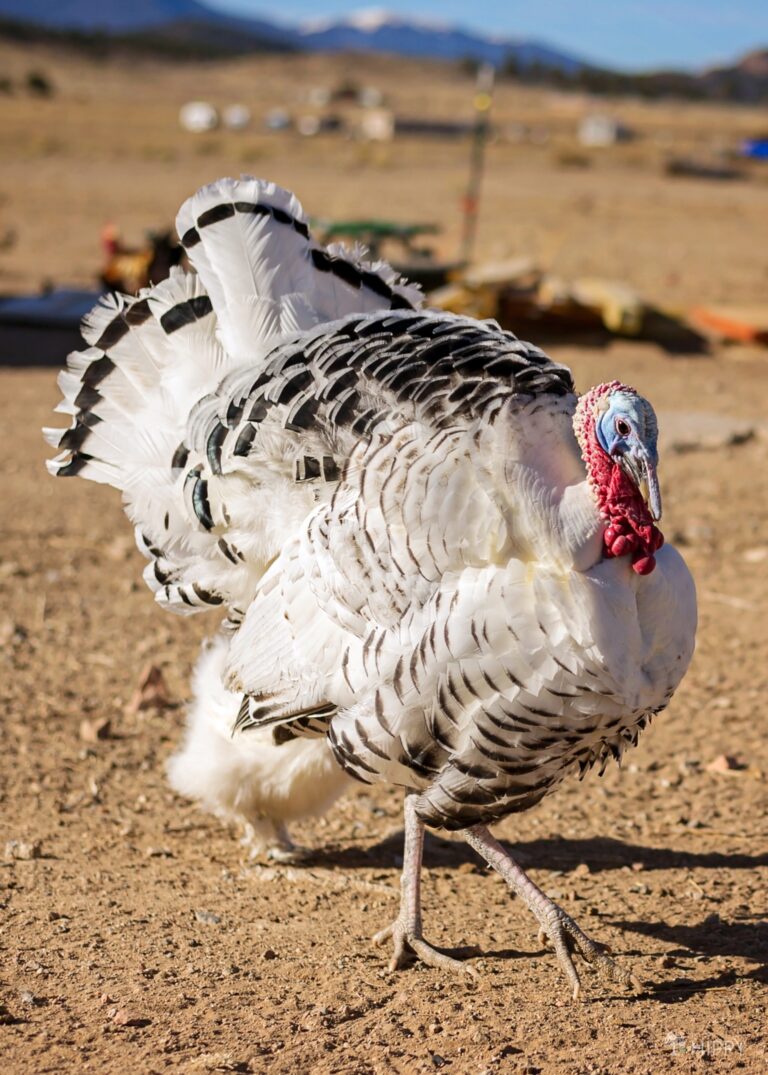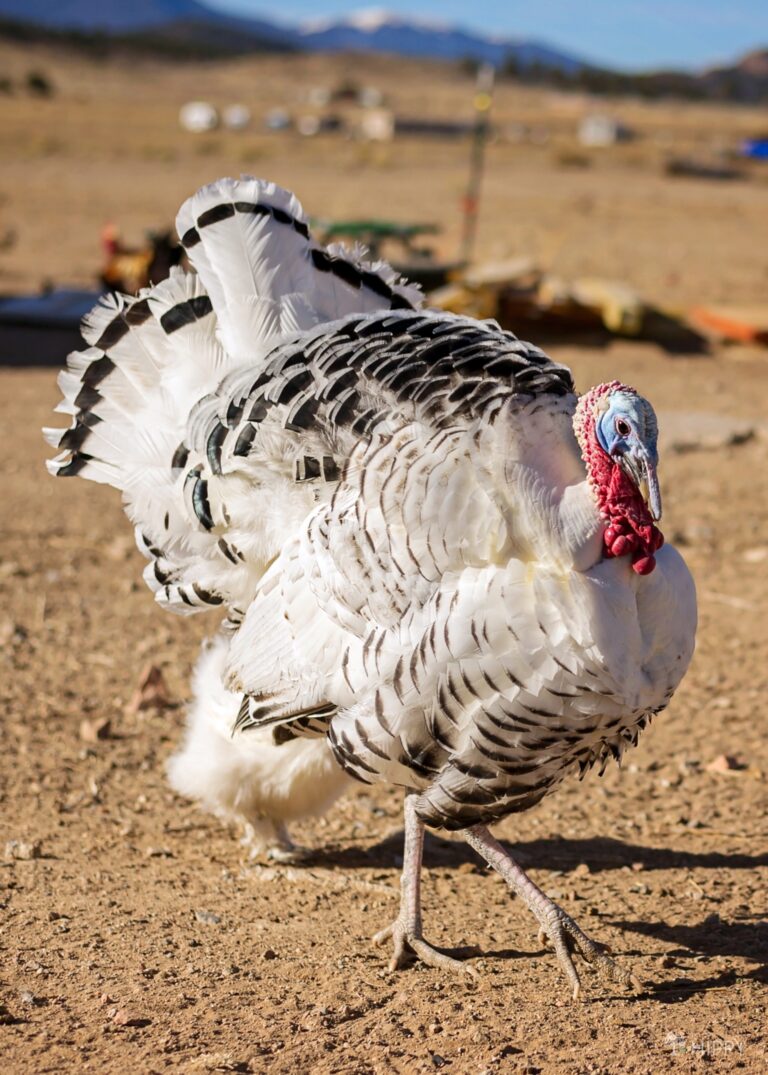12 Critical Mistakes You’re Likely to Make Raising Turkeys


For most homesteaders, chickens are the poultry of choice, but turkeys have unique advantages all their own. They’re becoming more popular once again after a major domestic downturn in the middle of the 20th century, especially with folks who have larger properties or are tired of the same old thing with chickens and ducks.
Despite their great size, turkeys are pretty easy to raise. They’re easy to handle, too, and healthy, and friendly, but they require a different approach compared to other poultry species.
Now, making the wrong mistakes could prove harmful or even fatal to your flock. You don’t want that to happen, and I don’t either. To help prevent that, I’ll be telling you about some important mistakes you must avoid making with your own turkeys. Let’s get right into it…
This one should be obvious, but you’d be awfully surprised to find how many people repurpose an old chicken coop and run for turkeys.
These are much bigger birds, and they need a lot more space to stay happy, healthy, and calm. In the coop, most domestic breeds need at least four square feet to themselves; the smaller breeds like the Royal Palm can get away with slightly less, around three square feet.
Out in the run, adults will need around 10 square feet each, and particularly vigorous flocks or those that enforce the pecking order relentlessly will be better off with 12.
If you’re going to let your birds free range, 100 square feet per adult will provide plenty of room for foraging, exercise, and exploration.
You cannot keep turkeys in the same space that you keep chickens, head for head. If you try to cram them into too small a space, you’re going to increase stress levels, and that will increase the risk of fights and illness.
Most birds are quite vulnerable to respiratory ailments, but turkeys happen to be extremely vulnerable to them. Whether it’s dust and other airborne debris or the buildup of ammonia and other toxic gases from their droppings, bad air is really bad for turkeys.
You must provide adequate ventilation in both the coop and the brooder. You can do this the same way that you would for a duck house or a chicken coop.
Ridge vents that are covered by hardware cloth to keep out smaller predators, windows and louvers that can be opened to let in airflow, and powered fans or attic vents in larger structures will do the job.
In the brooder, just make sure a steady supply of fresh air can get to the poults. As ever, cleaning up after your birds to prevent air contamination is crucially important. The longer you let the soiled bedding and poop build up, the worse off they will be.
I’ve already said several times that turkeys are big birds, and they are. They are also quite heavy! A mature domestic turkey can easily weigh more than 16 pounds, and one that weighs more than 20 pounds is pretty common.
Because they weigh so much, they’re especially prone to foot injuries from any source, and improper bedding and flooring are two of the leading causes of bumblefoot in turkeys.
Bare concrete floors and gravel are leading offenders, and I haven’t had good luck with metal mesh flooring either.
Trusty standbys like pine shavings and straw are good choices, but must be mucked out and replaced regularly to prevent moisture from causing problems with germs, mold, and other nasty microorganisms which can easily cause infection.
If you aren’t willing to do that, you’ll need to employ a deep litter method to keep the coop fresh while providing a soft surface for your birds to walk on.
Also, beware of bare plastic surfaces: easy to clean, yes, but very slippery and difficult for turkeys to balance on. If they fall, even while standing up, they can be injured.
Speaking of falls, this is a common mistake I see chicken owners make when they get started with turkeys. Don’t elevate the nesting boxes. Turkeys prefer to nest on or very near to the ground. Anything that is more than a single step up is likely going to be unattractive to a hen that is looking to lay eggs.
This tendency means you’ll need to design the coop accordingly or else add a space for nesting boxes that is easy for the turkeys to walk straight into.
But that assumes that your turkeys will want to lay in the nesting boxes in the first place: Turkey hens are a lot like ducks in that they might have some other out-of-the-way location in mind and ignore the nesting boxes entirely.
In any case, if you want those eggs, you’ll keep those boxes easy for the girls to reach and get into and out of.
Another mistake related to the agility of turkeys, or I should really say to their lack thereof!
If you haven’t gotten the picture by now, let me simply say that turkeys are disproportionately vulnerable to slips, trips, stumbles, and falls compared to chickens.
Sure, chickens can get hurt if they have a little tumble, but even bigger chicken breeds can flap their wings enough to break their fall most times. Not so with turkeys, and they have a much harder time stopping themselves once they start to fall.
A tragically common source of injuries for turkeys, including some life-threatening ones, is a fall off of the coop ramp.
So much of the time, I see turkey coop ramps that are just too steep. A raised coop is usually a good thing when it comes to keeping our birds safe and dry, but if turkeys can’t get into or out of it safely, it is a moot point.
My rule of thumb is that any turkey ramp should be at least one foot wide and have a linear run of 3 ft for every 1 ft of elevation up to the coop door. Putting cleats on it is another good way to help turkeys keep their balance.
Young turkeys are called poults, and like all developing birds, they have intense nutritional requirements. But because of their great size and relatively rapid growth, young turkeys need a high-protein starter feed – at least 28% protein.
If you give them a lackluster feed or don’t supply enough protein in their diet generally, they will grow slowly, fail to put on weight, and often fail to feather correctly, something which can plague them into adulthood.
These early weeks of a turkey’s life are critical for health and proper development.
They’ll need this high-protein diet for the first 2 months of life, but they can switch to a 20 to 22% protein feed going into week 9, and back down slowly as they age to an 18% feed as they transition into adulthood.
Keep in mind that compared to chicken feed, this turkey feed is often harder to find and more expensive, so be prepared for that!
As a rule of thumb, turkeys can eat just about anything that chickens can eat and vice versa. They have different typical diets, but both birds are omnivores and eat all kinds of animal and plant matter.
If you have a little bit of chicken feed lying around or need something to give to your turkeys in a pinch, that’s fine…
However, you mustn’t give it to them full-time or as a mainstay of their diet. This will invariably result in health problems resulting from deficiencies, typically of protein.
Keep this in mind: chicken feed is for chickens, and turkey feed is for turkeys. If you want your birds to grow and stay healthy, you’ve got to give them the kind that their biology demands.
Turkeys are so much bigger and stronger than chickens that some owners think they don’t have as much to worry about concerning predators. Toms especially have some seriously wicked spurs and stout beaks. Can’t these big, beefy birds take care of themselves?
Yes and no. Turkeys will easily dispatch mice, rats, and many small snakes, but other critters like raccoons, possums, coyotes, dogs, bobcats, and the like will still make mincemeat of them, and all kinds of poultry predators will still pick off poults with ease.
And you must remember that turkeys make disproportionately large meals, and are tempting targets for these animals. Therefore, secure the turkey run and the coop with hardware cloth capable of keeping out all predators big and small.
If you fail to protect your turkeys, they will get picked off like any other bird on the homestead.
This is a highly controversial one, and I myself know folks who raise turkeys and chickens alongside one another and have never had a problem and report that they get along great.
My concern, and it should be yours, is that raising chickens and turkeys in close proximity makes turkeys disproportionately vulnerable to blackhead disease.
Blackhead is a devastating illness that is very nearly 100% fatal for turkeys. Chickens are carriers and only rarely seriously affected by it.
But they can, and will, serve as a vector for the infection of turkeys and can spread it through water, food, close contact, and even solid particles in the air.
When turkeys get infected, they can drop dead in less than a day with basically nothing you can do. It’s a terrible fate for your turkeys, and it’s up to you to keep them safe from it. For that reason alone, I don’t think it’s worth raising them both together.
Blackhead disease is justifiably the biggest fear of turkey owners – but it’s not the only ailment to worry about. Newcastle, fowl pox, and bird flu are all serious diseases that demand good biosecurity protocols to fight.
One of the best things you can do to fight each of them, or at least give your turkeys a fighting chance against them, is to get them vaccinated.
My advice? Get in touch with a poultry vet and have them set up your flock on a regular vaccination schedule according to your goals and plan. Then stick to it.
Turkeys seem so calm, thoughtful, and serene compared to chickens that it’s easy to leave them to their own devices. This is a mistake…
Your turkeys need lots of interaction and time with you if you want them to be easy to handle. Treat them poorly or fail to spend time with them and talk to them, and they’ll become standoffish, neurotic, and highly prone to run from you.
Males and females might become aggressive and peck or flog you when you get close or try to corner them.
On the other hand, if they know you, trust you, and associate you with happy feelings and good times, they’ll readily come up to you and even allow themselves to be carried without any fuss.
Under no circumstances should you release your turkeys into the wild for any reason. Maybe you are done with them, maybe you’ve got too many, or maybe you’re getting out of the poultry business altogether.
It doesn’t matter: domestic turkeys are not wild turkeys and cannot survive and thrive in the wild. They typically can’t fly well, if at all, and they don’t have the same instincts.
Worse, your domestic turkeys might spread devastating diseases to wild turkey populations like the aforementioned blackhead.
This is a serious concern, so serious that several states, including the Carolinas, have laws against turning domestic turkeys into the wild. You have been warned!

Tim is a farm boy with vast experience on homesteads, and with survival and prepping. He lives a self-reliant lifestyle along with his aging mother in a quiet and very conservative little town in Ohio. He teaches folks about security, prepping and self-sufficiency not just through his witty writing, but also in person.
Find out more about Tim and the rest of the crew here.
